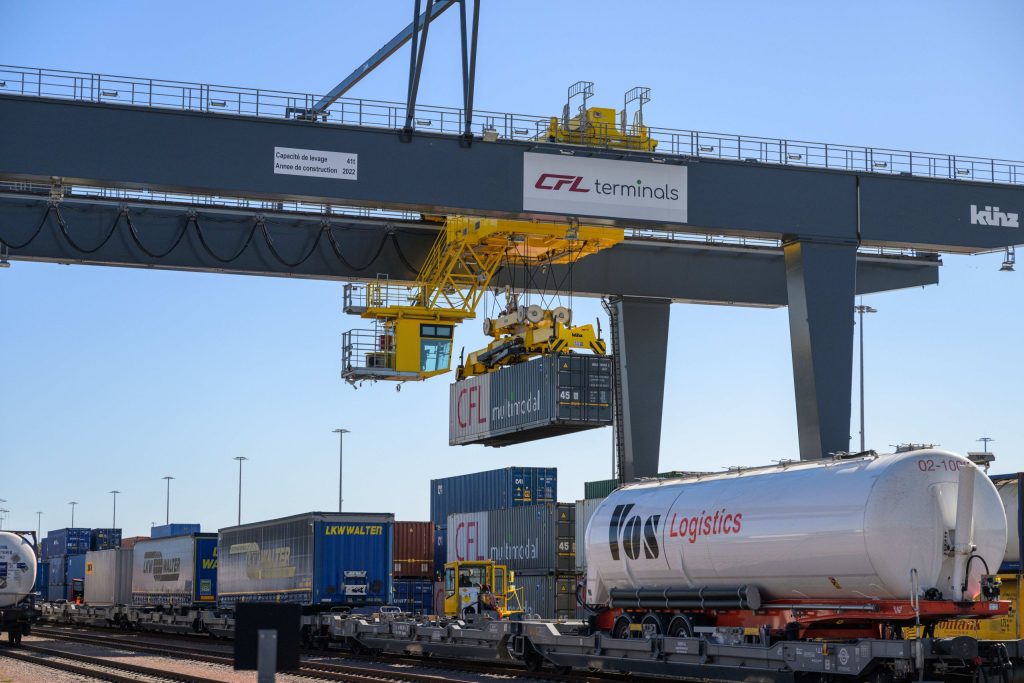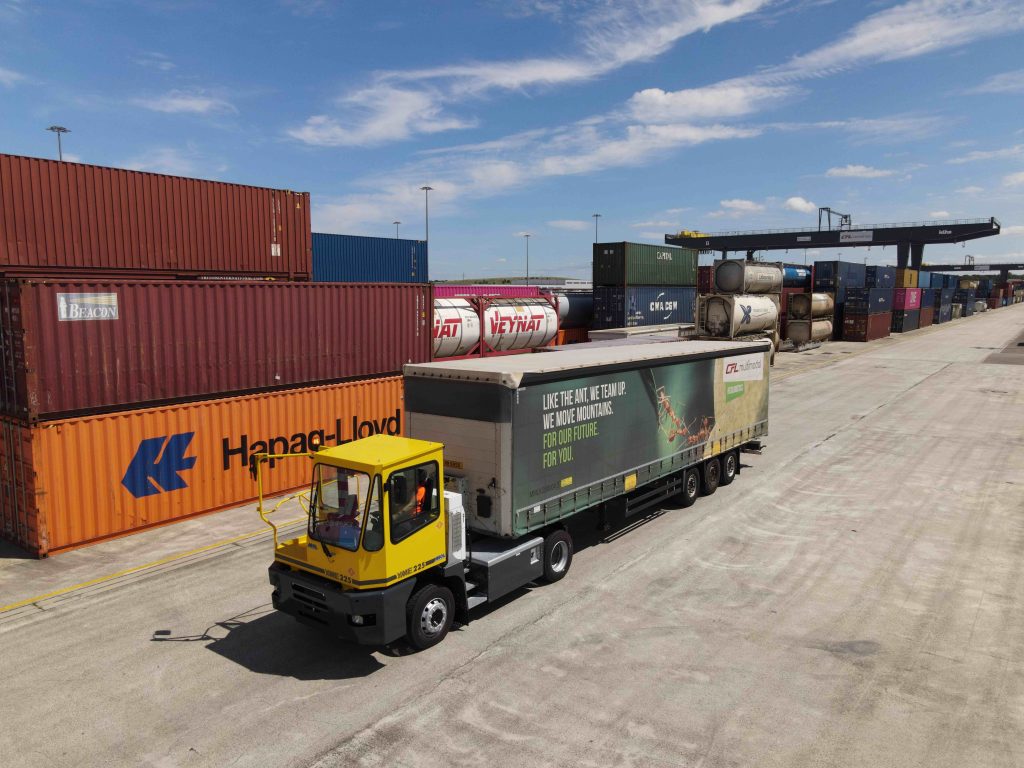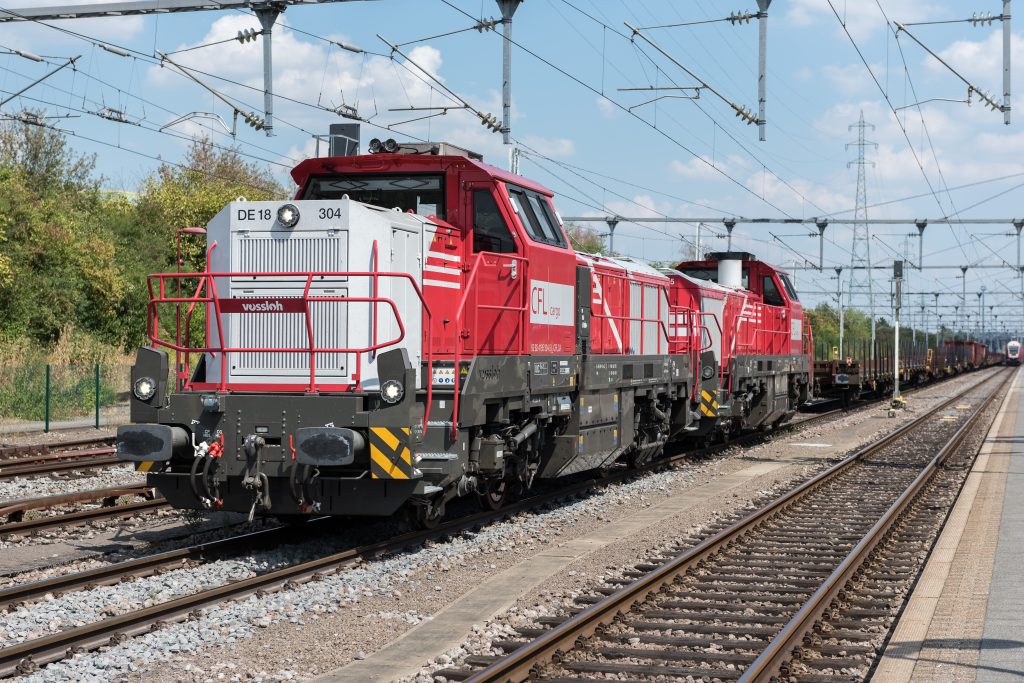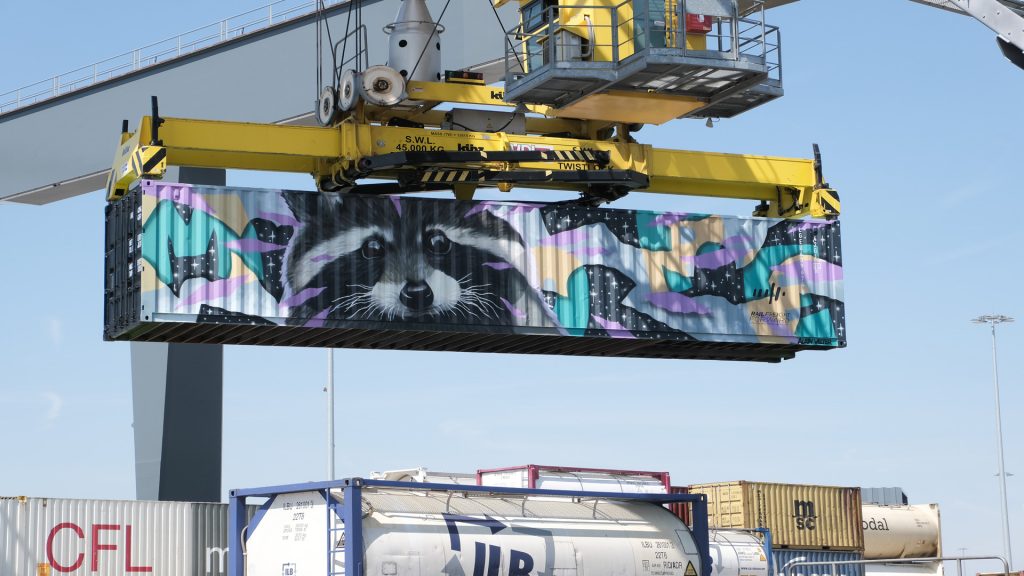
More than 99,000 tonnes of CO2 avoided with the CFL intermodal terminal
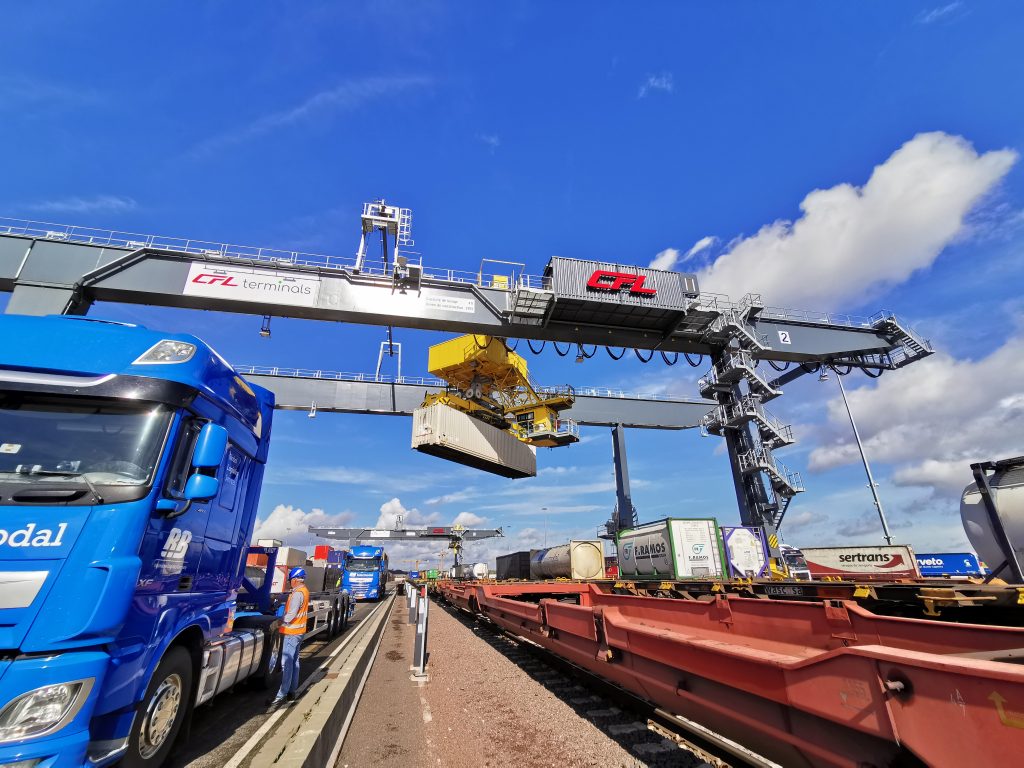
With a third crane installed in 2022, the CFL intermodal terminal at Bettembourg-Dudelange offers pragmatic solutions to the twofold challenge of logistics that must be both efficient and sustainable. The 33-hectare terminal, which is open 24/7, is also a major asset for Luxembourg’s positioning as a European multimodal logistics hub.
Reducing greenhouse gases from transport by 90% by 2050. To achieve the European Commission’s ambition set out in the “Strategy for Intelligent and Sustainable Mobility” (2020) – which is part of the “Green Pact for Europe” – a modal shift towards rail and inland waterways for freight transport is a must.
Doubling the volumes transported by rail
According to the “Rail Freight Forward” consortium of European freight companies, the modal share of freight transported by rail must double (from the current average of 18% in Europe to 30%) to avoid the harmful consequences of the 30% increase in freight transport forecast between now and 2030.
If this growth in freight were to be absorbed by road transport alone, one million additional trucks would be put on the roads and 80 million tonnes of CO2 would be emitted into the atmosphere. However, for environmental and health reasons, as well as for infrastructure needs, road transport alone is no longer capable of absorbing such growth.
The future lies in combining transport modes
With its terminal in Bettembourg-Dudelange, CFL terminals, a subsidiary of the CFL multimodal group, is at the crossroads of Europe and modal shift. Since 2017, the new terminal is among the leading continental terminals with its complementary solutions. Ideally located on the corridors between the North Sea and the Mediterranean Sea, the 33-hectare site has around one hundred employees.
To add another string to its logistical bow, the CFL Group acquired a stake in the Luxport Group on January 1st 2023. By joining forces with the main operator of the port of Mertert, the CFL Group will strengthen its "trimodal" rail/road/waterway offer to and from the major European seaports.
In 2022, CFL intermodal’s combined (rail/road) transport services made it possible to prevent 84,033 freight shipments from being transported solely by road, with a direct benefit for the environment: more than 99,000 tonnes of C02 equivalent not released into the atmosphere. As a sign of the relevance of modal shift and customer demand, the terminal has been equipped with a third loading crane in autumn 2022.
“Given the activities carried out to date on our 4 loading lanes, each 700 metres long, we had forecast that the capacity of our two cranes would be exceeded by 2022”, explains Daniel Feyder, Director of CFL terminals. “Hence the decision to increase our capacity to handle containers up to 41 tonnes and semi-trailers up to 45 tonnes on the rail motorway platforms.”
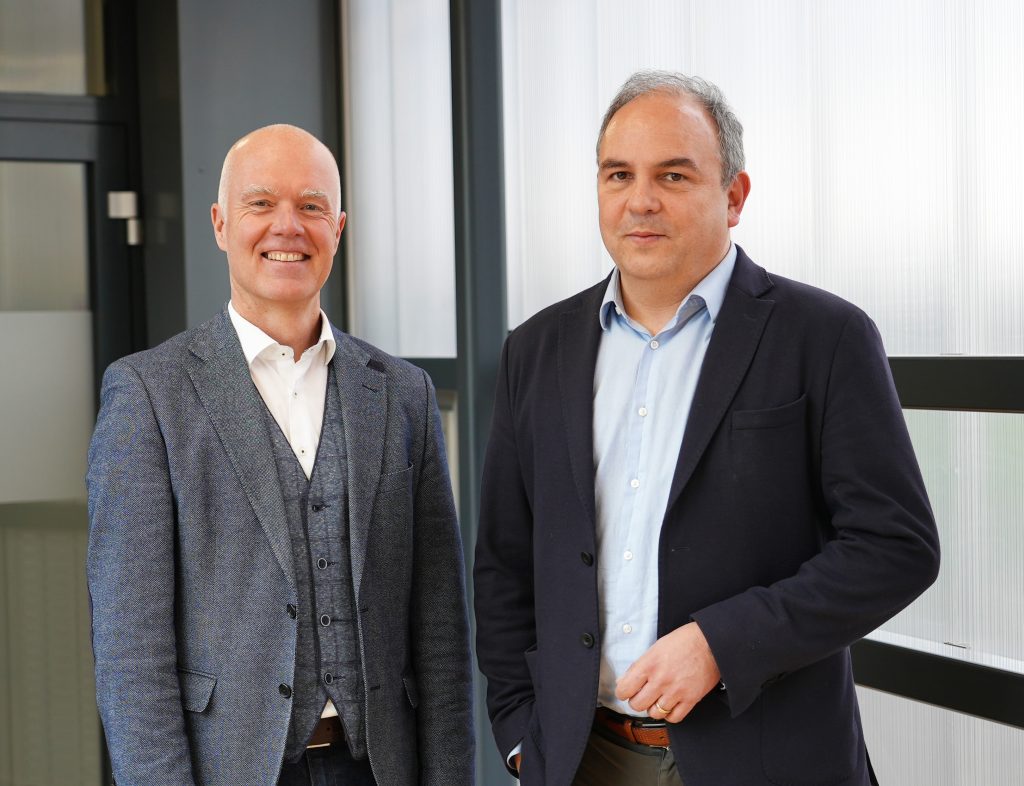
Competitiveness, productivity and sustainability
This third crane is part of CFL terminals’ 2021-2025 investment plan, which also includes a remote control system for the three cranes and the forthcoming replacement of combustion tractors with electric ones. As part of the “CEFTransport 2021” call for projects, the terminal received financial subsidy from the European Commission to support the above-mentioned investments.
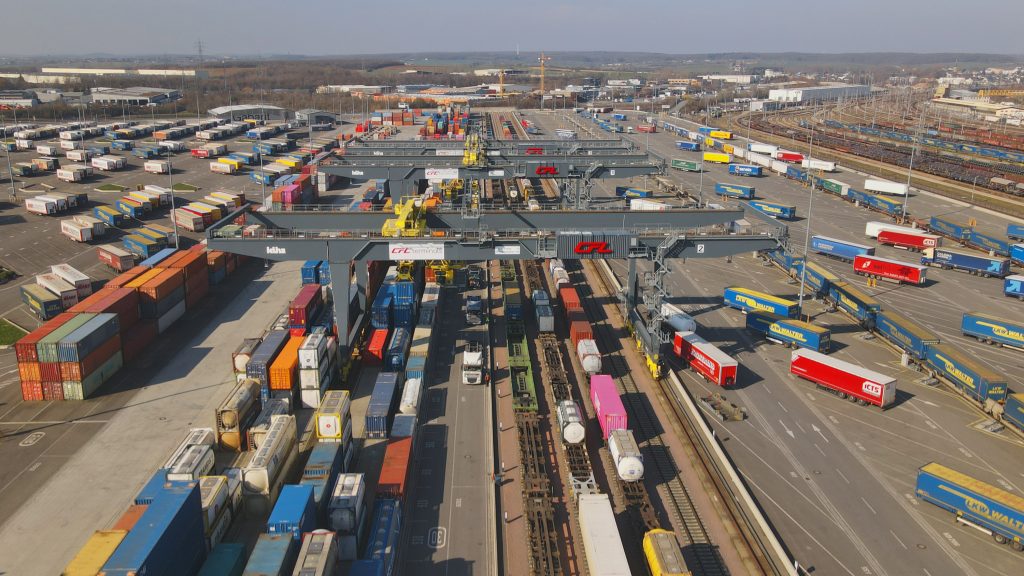
“We now manage all three cranes with the same remote control system equipped with cameras and six screens per crane, all in the same control room. The three crane operators (the terminal employs around 15 crane operators in total) who are stationed side by side in the control room benefit from a better working environment”, adds Daniel Feyder. “With this configuration, we are gaining in productivity, in the service of more environmentally-friendly logistics.”
The new crane and control system, which was installed without interrupting site operations and on schedule, is cited by the Austrian supplier as one of the most modern installations in Europe. As Rail Freight Forward points out, the ability for operators to propose innovative solutions and make rail freight as easy to access and use as road freight is one of the keys to substantially increasing modal shift.
Meanwhile, the CFL intermodal network, whose central point is the Bettembourg-Dudelange terminal, has been further extended in 2022 by opening one of the longest connections in Europe: 2,000 km between Sète (France) and Poznan (Poland). This link completes the Bettembourg – Poznan rail motorway, with CFL cargo providing wagon traction. Furthermore, in addition to the gradual increase in the frequency of the Bettembourg – Trieste train in the last quarter of 2022, a new intermodal train has started up to Halkali in Turkey.
Rail motorways also represent vectors for the development of bilateral economic relations, as demonstrated by the “Marquis of Villalobar Prize” awarded to the CFL in November 2022.
Pan-European connections, staff expertise, new technologies… The CFL terminal at Bettembourg-Dudelange continues to evolve to remain an essential platform for Luxembourg’s positioning as a European logistics hub.

